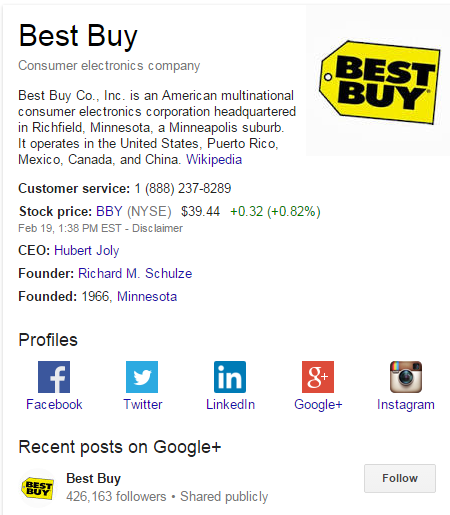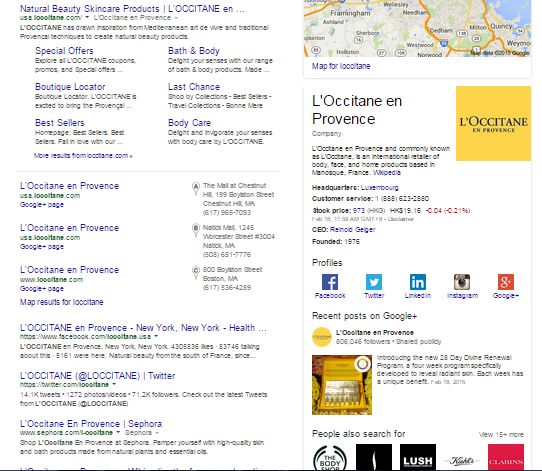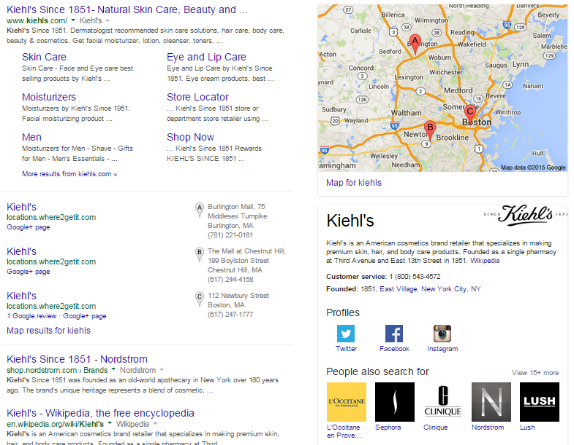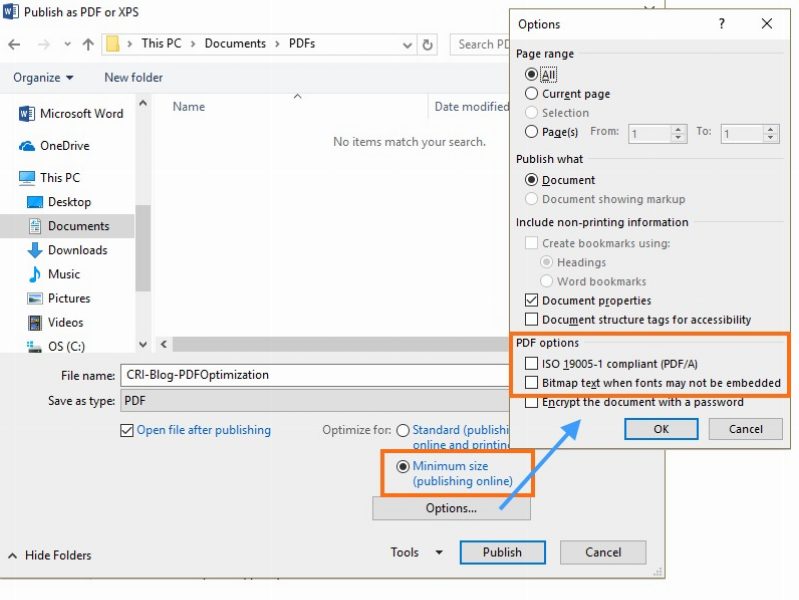by Charles River Interactive | May 1, 2018 | Analytics, Industry Trends, Organic Search, Paid Search, PPC, SEO
What is Google Data Studio?
Google Data Studio is one of the newest additions to the Google Analytics 360 Suite. This interactive data visualization tool was moved out of BETA stage in late Spring of 2017 and continues to evolve weekly. The easy to use tool allows marketing professionals to pull information from multiple data repositories into one centralized, live, visually appealing, interactive dashboard. Google Data Studio dashboards allow its original owner to share important data sets while maintaining control of what information can be accessed. The Data Studio dashboards are perfect for internal use but are equally as valuable for client reporting. Typical to most Google products, the dashboards are saved automatically online within your Data Studio account and can be edited by multiple users at the same time. In a nutshell: Google Data Studio allows all businesses (large or small) to visualize data in a simplistic and efficient manner!

Why Should You Use Google Data Studio?
Google Data Studio is an incredibly powerful visualization tool. The ability to bring in data from multiple sources on one page at the same time gives you the flexibility and ease to consolidate reporting platforms. Are you interested in seeing how your Paid Search efforts have changed Month-over-Month, but also want to see Year-over-Year results at the same time? Not a problem! Or are you trying to determine which channel converts best on a mobile device? After implementing a few filters within your report, this information is only one click away! There are countless reasons why we believe marketing professionals everywhere should be taking advantage of Google’s new reporting tool. Below are the top 5 reasons why we have adopted Google Data Studio as our primary reporting tool here at Charles River Interactive.
1. It’s FREE!
Google Data Studio is free of charge. All you need to do is create a Google account. While in the BETA stage, Data Studio only allowed a maximum of 5 reports, limiting its abilities to be used by marketing agencies and small businesses alike. Google has since removed this limitation and you are now able to create as many reports as you need. Comparable products such as Tableau, Qlikview, FusionCharts, Plotly, and many more can cost over thousands of dollars a month.
2. Endless Customization Options
Let’s be honest, reporting can sometimes be tedious… but not anymore! Google Data Studio provides you with the ability to change colors, fonts, background images, and essentially everything you need to make your reporting look top notch. Here at Charles River Interactive, we understand everyone prefers to look at data differently. Google understand this as well and thus has provided multiple options on how you are able to present your data. Pie charts, pivot tables, line graphs, bar graphs, tables, geo maps, scatter charts, area charts, bullet charts…. Google Data Studio has you covered.
3. Calculated Fields
Are you looking to transform, categorize, and make calculations within your data? Are the default dimensions and metrics from your data repository just not enough? Calculated fields give you the ability to create new dimensions and metrics in your data source that perform arithmetic, apply mathematical formulae, extract or transform text, or return new information based on logical comparisons. Once the calculated field has been established, you are able to use the new dimensions and metrics in charts and filters, just like the default fields. This means grouping pages, creating ratio formulas and custom naming conventions can now all be done within the visualization tool itself.
4. Community Connectors
Out of the box, Google Data Studio natively connects to other Google products such as Analytics, AdWords and Sheets. However, at Charles River Interactive we understand that many businesses operate and report on multiple different data sources outside of the Google family. This is where the power of Data Studio Community Connectors comes in! The best way to think of a Community Connector is to visualize it as a pipeline between Data Studio and your favorite web service, where your data is stored. As mentioned before, Google continues to make small upgrades to the Data Studio platform and one of those upgrades includes an option for third-party connectors such as Supermetrics. These third-party connectors allow you to easily bring in data from sources such as Bing Ads, DoubleClick, Facebook Ads, LinkedIn Ads, Twitter Ads, and Yahoo Gemini to name a few. Once the third-party connection is setup, the process for creating reports is the same as when you are using a Google data source.
5. Sharing Capabilities
Google Data Studio is built to efficiently optimize collaboration capabilities. Much like a Google Doc or Sheet, Data Studio allows you to seamlessly share your report with others by simply sending them a URL link. Data Studio also provides you with the ability to control how each user can interact with the dashboard by assigning “view” and “edit” limitations. These sharing options give you (the report owner) total control and allow you to easily collaborate with clients and teammates without having to exchange password information that could in turn provide access to your Google Analytics account.
Getting Started
So now that you better understand some of the capabilities and power of Google Data Studio, you are probably wondering how do I get started? Luckily, we have put together easy to follow instructions on just how do that.
1. Establish a Google Data Studio account. Most people choose to use the same account as their Analytics & Search Console setups. We recommend this method (utilizing the same account login email as the one you have for Analytics & Search Console) as this will make the sign-up process quicker and easier.
2. Complete the tutorial. Google offers an extremely helpful tutorial to get you up and running. It only takes about 30 minutes to go through the tutorial and by the end, you will know enough to create your own very first dashboard.
3. Explore the Data Studio Report Gallery. This report gallery is a collection of both Google product templates and user submitted dashboards that are available to you, free of charge! We have found these templates to be tremendously useful and instructive when trying to display data effectively.
 An example of a Charles River Interactive analytics dashboard
An example of a Charles River Interactive analytics dashboard
Final Thoughts
In the competitive business landscape we operate in today, being able to make data driven decisions is more important than ever. Google Data Studio provides organizations of all sizes the ability to easily visualize their data in ways that will foster new insights and recommendations. Here at Charles River Interactive we use this tool on a daily basis, we set up reports for our various clients, and we believe that other businesses would benefit immensely from using it as well. So, what are you waiting for? Stop laboring over messy excel spreadsheets and manual diagrams and start creating professional looking reports by leveraging the power of Google Data Studio!
We hope you enjoyed learning more about Google Data Studio and some of its incredible capabilities. At Charles River Interactive, we believe Google Data Studio is revolutionizing the data visualization game. Still have questions? Or want to share what you love most about Google Data Studio? Reach out to our Integrated Web Services team at info@charlesriverinteractive.com.

by Charles River Interactive | February 2, 2018 | Organic Search, SEO, SEO Blogs, SEO Industry Trends, Uncategorized
Super Bowl LII takes place this Sunday, February 4th at 6:30pm in Minnesota. Last year, more than 111 million viewers watched Super Bowl LI and the incredible comeback of the New England Patriots over the Atlanta Falcons. It can be expected that a similar number of viewers will tune in again this year as the Patriots battle the Eagles for what could be their 6th Super Bowl win.
Although actually watching the Super Bowl is the most important event this upcoming weekend, personally, I find that the food during the Super Bowl is just as important to the overall experience.
In my house, during football season, there’s always something “buffalo chicken” related, whether it be wings, tenders or a nice dip (my favorite). But, what about outside of my house? Which is most popular? To find my answer, I went to right to the source: Google. What is the most searched for buffalo chicken snack form during the week leading up to Sunday’s game? Looks like the Internet is with me because “buffalo chicken dip”, in red, has historically been the most popular of the “buffalo chicken” related snacks leading up to the Super Bowl:

Blue Cheese or Ranch with your buffalo chicken?
Fortunately, or unfortunately, with “buffalo chicken…”, in my house, comes the debate ranch or blue cheese. I was hoping to finally put an end to this debate and prove the blue cheese was the favored pairing, by researching average monthly search numbers using Google Adwords. Unfortunately, my research proved me wrong.
Comparing the query “ranch recipes” to “blue cheese recipes”, ranch outnumbered blue cheese by an average of 700 monthly searches, according to Google Adwords. Even the trend for these searches proved me wrong! “Ranch recipes” are more popular during AFC and NFC Championships and Super Bowl weekend than “blue cheese recipes”.

Based on that information, looks like I’ll be making a buffalo chicken dip with ranch instead of blue cheese mixed in.

Who wants to be healthy on Super Bowl Sunday?
Turns out, a lot of people do. As did many Americans, I set a goal to get healthier in 2018. Obviously, buffalo chicken dip with ranch dressing is definitely not the way to go about doing that. Lucky for me, I’m not the only one looking for either healthy or good Super Bowl snacks! Interestingly enough, looking at Google trends, the query “healthy super bowl snacks” has seen a 50% rise in search queries since last Super Bowl weekend. Looking at January and February 2017 average monthly searches for “healthy super bowl snacks”, the query had 1.2 million and 1.8 million searches, respectively.
Looking for inspiration to make some healthy super bowl snacks along with your buffalo chicken dip? The following websites are holding the top spots in search results:
Let’s not forget about those 3 million American’s who have celiac disease that need a gluten-free option to indulge in during the Super Bowl. Although queries surrounding “gluten-free super bowl snacks” range from 10 to 40 average monthly searches, according to Google Adwords, the following websites hold the top spots in search results for these treats:
Gluten-free or not, healthy snacks or buffalo chicken dip, I know I can’t wait until game time to watch Super Bowl LII and munch on some yummy treats, no matter what they are. Oh, ya, and Go Pats!

by Charles River Interactive | May 24, 2017 | Industry Trends, SEO
Earlier this year, Google started including brands’ social profiles within its Knowledge Graph panel. In the past, this feature only applied to famous people, such as actors, musicians and politicians. What does this mean for brands that Google will now pick up their social handles?
It comes down to two things:
• If your brand is already active in the social space and has a great presence, it will have even a better visibility in search results.
• If you haven’t had the time to build out your brands’ social profiles, this is yet another reason why you absolutely should. ASAP.
More importantly, Google now allows companies to add markup language to their sites to specify their official social profiles for search engine crawlers. Let’s take a look at why this update matters for search and how your plan of attack should look like to leverage it to your best advantage.
Here is a screen shot of the Best Buy Knowledge Graph:

Just as in the past, you see a snapshot from the brand’s Wikipedia page (as many of us know, this is how most Knowledge Graphs are generated). Right below it, Best Buy’s social handles are displayed. By the way, Google currently picks up profiles from the top social networks (interestingly, MySpace is on the list):
• Facebook
• Twitter
• Google+
• Instagram
• YouTube
• LinkedIn
• Myspace
I do anticipate this list expanding. So, if Pinterest and Tumblr are an integral part of your marketing campaign, this is not by any means the reason to drop them and bring your brand back to the antique MySpace. Just like anything, take this update with a grain of salt and really think what the best strategy is for your brand.
However, even if you’re a small B2B business, this is a no-brainer to build out your profiles on top networks (at the very least, on Facebook, Twitter, Google+ and LinkedIn), just so you can own that Web real estate for the branded queries.
Now, Google+ is just as important as ever to your search campaigns. Below the social profiles’ links, Google Knowledge Graph displays your latest Google+ posts, followed by your competitors’ information. If you maintain solid presence in social channels and regularly update your brand’s Google+ page, you’d be able to push competitors’ mentions down the bottom of the Knowledge Graph panel and really dominate that digital real estate.
For example, in the following search results below, two competitive beauty brands, Kiehl’s and L’Occitane, both have solid Knowledge Graphs. However, due to the fact that more L’Occitane’s social profiles are picked up, in addition to the company’s Google+ updates, you have to scroll down the search engine result page to see competitive logos. In the Kiehl’s example, competitors’ presence is way more prominent:


So, if you are serious about your brand’s digital marketing, I highly recommend that you add the following to your to do list:
• Invest effort in building out your brand’s presence in top social networks.
• Maintain active Google+ page.
• Implement Google-recommended structured data markup on your site to distinguish your brand’s official social profiles. Conveniently, Google outlines a detailed guide on how to implement this markup in its Developer’s Guide here: https://developers.google.com/structured-data/customize/social-profiles
I hope I convinced you to think about social marketing. Stay tuned on more updates on how to integrate search and social to really benefit your overall marketing efforts!
by Charles River Interactive | March 2, 2017 | Organic Search
Gone are the days of posting your PDF brochure that matches the content on your web page. Now, many of the PDF documents posted online contain rich, detailed information that serves as a supplement to the website content. And just as you would like users to find your website in search, you want them to find these PDFs that you have created.
Follow the steps outlined below and you will be well on your way to getting your PDF documents indexed and found in search.
Creating Your PDF
- Make it text-based – Images have their place, however text-based PDFs are able to be crawled and understood by search engines. For lengthy documents with multiple sections, include a table of contents with keyword optimized headings.
- Incorporate links – Wherever applicable, embed links back to your site. This includes your logo. If your PDF ends up on another site, these will count as backlinks, which are considered an important ranking factor.
- Use image alt text – Make alt text relevant to each image and use keywords as applicable.
Saving Your PDF
- Include optimized file properties – Add a title no longer than 60 characters including spaces with keywords toward the beginning. This is what will be seen in the search results, so make sure it conveys the topic clearly.
- Use an SEO-friendly file name – Sometimes the title is not shown in search results, and what is seen is the file name instead. Make sure it is SEO and user friendly – use dashes rather than underscores to improve readability.
- Minimize the file size – Nothing is worse than having users leave because it takes too long for a file to download. When creating a PDF from Microsoft Word, choose Minimum Size, and deselect ISO 19005-1 compliant (PDF/A) and Bitmap text when fonts may not be embedded under Options.

Keep these steps in mind when creating PDF documents for your website, and you will help optimize them for users as well as search engines.
Interested in learning more about industry trends? Read more from our blog, View from the Charles:
The Google Ad 4-pack and Organic User
Data Capture Tips for Digital Marketers
by Charles River Interactive | February 13, 2017 | Industry Trends, Organic Search
With the rise of social and mobile, the Internet is rapidly evolving into an integrated multi-dimensional platform facilitating many of our daily transactions and interactions. Never is this trend more evident than on a major holiday such as Valentine’s Day. Last year alone, according to National Retail Federation, American’s spent over $19B on Valentine’s Day. Valentine’s Day is now No. 2 behind Christmas as the year’s premier gift-giving holiday. Those who celebrate Valentine’s Day are marking the occasion by exchanging tokens of their affection with a widening circle of friends and family members including their children, parents, and pets.
Each year women anxiously await flowers, chocolates, jewelry and romantic dinner plans from their significant other to celebrate Valentine’s Day. But what they don’t know are the details and preparation that go on behind the scenes, to make Valentine’s Day a romantic, love-filled special day.
As a SEO Strategist at CRI, I’ve had the opportunity to watch Valentine’s trends for search queries being used to help make current or future Valentine’s Day preparations smooth and easy, making it an enjoyable day for not only the gift recipient, but the buyer as well!
As you scurry to buy your Valentine’s Day gifts, here are a few Valentine’s Day queries that may save you some time and money.
Q: Flower prices skyrocket during this holiday; how can you save a few bucks and still produce an awe-striking bouquet?
A: Users were looking for the best deal to get their loved ones’ flowers. Using the following Search Queries:
flower delivery coupon; flower delivery free shipping; flower delivery promo code


Q: Want to outdo your past Valentine’s Days and make this one extra special?
A: The simplest word can change your results. Users are using “best” to maximize their search results.


Q: You and your loved one have a sweet tooth? What sweet treats are being sent your way?
A: 1.5 M users were more interested in finding a way to get chocolates delivered to their Valentines than Cookies or Candies.


Q: It’s been said that the way to a man’s heart is through his stomach. What are searchers planning?
A: 4M users are looking to plan a romantic dinner with their special someone, whether it’s to cook themselves or a nice restaurant.


Not only is it a day for couples, but singles are also looking to pamper and celebrate the love they for themselves.
Q: Treating yourself to a special Valentine’s Day and looking for things to do? You’re not alone!
A: Don’t be discouraged to spend Valentine’s Day alone, there are 20.3M other users who are also looking to spend Valentine’s Day single and looking to pamper themselves.


So do whatever your heart desires this February 14th; buy roses on the cheap, dine out, indulge in some chocolate, or be a bit more unconventional and find a way to pamper yourself.
Interested in learning about additional industry trends? Read more from our blog, View from the Charles:
Data Capture Tips for Digital Marketers
The Google Ad 4-Pack and Organic User Intent

 An example of a Charles River Interactive analytics dashboard
An example of a Charles River Interactive analytics dashboard


















